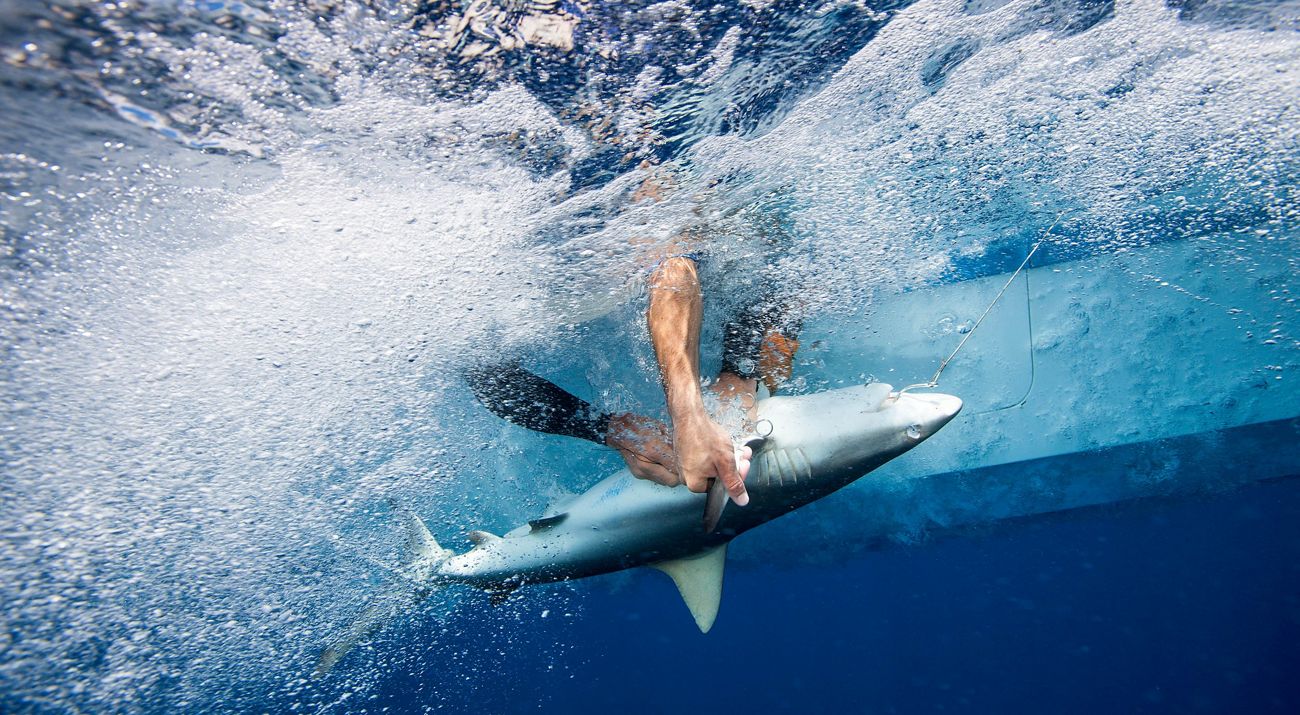
Kingdom of the Hungry
TNC’s Palmyra Atoll has become the ultimate living lab for researchers who work in some of the world's healthiest—and most dangerous—shark habitat.
March/April 2013
For years, Kydd Pollock has dived with sharks. Yet even now he is awed by the animals’ ability to gather together, like specters, seemingly from nowhere.
“I’ll scan around and see nothing,” he says. “And only moments later, I can look up again, and they’re right there. They’re just amazing creatures.”
But on November 11, 2010, Pollock got a terrifying glimpse of just how wild the animals can be. That day, Pollock, the chief of marine operations at the Conservancy's Palmyra Atoll preserve in the central Pacific, accompanied several researchers as they boated to the outskirts of the islands.
The scientists hoped to corral a cantankerous Napoleon wrasse they called Big Eddie with a net. Once the group moored their boats, the scientists pursued the fish with scuba gear. Suddenly, a pregnant six-and-a-half-foot gray reef shark appeared—and, to everyone’s alarm, swam straight into the researchers’ net.
Pollock, who grew up working on his dad’s charter fishing boat in New Zealand and fishing and diving in the South Pacific’s Cook Islands, has been a big-fish wrangler all his life. While the scientists worked to untangle the shark, Pollock removed his scuba gear and snorkeled above to serve as a safety backup. Once free, the disoriented shark swam straight for another section of the net.
Pollock kicked through the water to pull the net out of the way, and the shark turned away, as if she were going to swim off. Then, as he gathered the net in his hands, Pollock looked over his shoulder and saw a terrifying sight.
“She had spun around and was coming at me, mouth wide open,” he says. “I was the only thing in her way.”
The shark closed her jaw over Pollock’s head, grabbing his face mask and skull with her teeth, and began forcing him deeper, violently shaking her head as she went.
“His entire head was in her mouth,” says Amanda Meyer, a U.S. Fish and Wildlife Service refuge manager, who was scuba diving nearby. “You could hear the crunching underwater.”
Then, unexpectedly, the shark backed up, spat him out, made one more glancing blow at his head and disappeared.
The other divers heaved Pollock into one of their boats and raced back to the atoll’s research station, where they improvised an emergency room in the science lab. Pollock was in shock and shaking, and covered in blood. “Both his eyelids were sliced,” says Meyer. “It was just a torn, ripped mess.”
The nearest professional medical help was 1,000 miles away in Hawaii. Via satellite phone, research station manager Ned Brown reached doctors, who then coached Meyer and other Conservancy staff through the delicate process of closing his wounds with stitches and surgical staples.
Miraculously, Pollock’s injuries were light enough that he was able to remain on the island for another month—and resume diving—before finally flying out to Hawaii. But New Zealand’s Sunday News wasted no time in splashing grisly photos of Pollock under a headline that screamed, “Kiwi’s Horror Shark Attack.”
For Pollock, though, getting bitten was simply the cost of trying to understand a world where sharks, not humans, are in charge. “Even the minute it happened, I’ve never seen it as an attack,” he says. “Sure, the shark bit me. [But] it was us that put the net down. It wasn’t the shark’s fault.”
Pollock was back in the water just 21 days after being bitten. Since then, he has racked up lots more dive time helping scientists carry out their research on Palmyra.
There is, in many ways, a sense of rare opportunity on this group of islands that make up the atoll. Nearly 40 million sharks are killed worldwide each year, and the planet’s coral reefs have suffered widespread destruction. Yet Palmyra is different.
Halfway between San Francisco and Auckland, the tiny necklace-shaped atoll is home to some of the most pristine coral reefs on the planet. A volcanic pinnacle that rises more than 16,000 feet from the ocean floor and is crowned with more than 130 species of coral, Palmyra is fringed with sprawling reefs filled with a psychedelic profusion of fish. Yellow-and-black convict tangs shimmer in the water like butterflies, while turquoise, lemon peel and star-eyed parrotfish, moon and sunset wrasses, neon damselfish and goldrim surgeonfish brighten the reefs.
The atoll’s relatively undisturbed waters offer surprising new ways of thinking about sharks and a rare window into the way that predators shape entire ecosystems. Yet Palmyra has also always been a wild and sometimes savage place. Eighteenth-century seafarers brought home reports of “sharks innumerable,” so voracious that they attacked the oars of visiting boats. Not much has changed here in all the years since.
Pollock spends considerable time diving in Hawaii as well and has made roughly 700 dives there over the past several years. “Out of all those dives, I’ve basically seen one shark,” he says. “Whereas here, you could potentially see up to 100 sharks on a single dive.
“This,” he adds, “is a predator-dominated ecosystem. You are not at the top of the food chain here.”
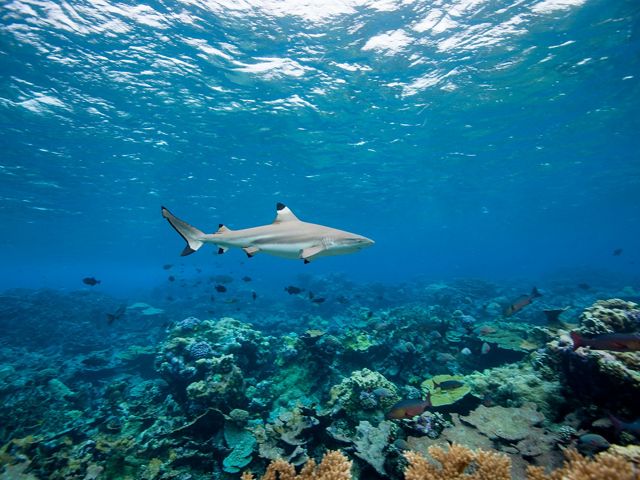
Today, Pollock guides the 25-foot research boat Zenobia through choppy seas off Palmyra. Back on the sand-fringed atoll, coconut palms lean crazily from the bright green pisonia trees; farther out, a white line of breaking surf marks the edge of the reef. A ragged scrim of purple cloud hangs on the horizon.
On Zenobia’s working deck, a University of California, Santa Barbara, researcher named Jenn Caselle, University of Hawaii professor Alan Friedlander, and Yannis Papastamatiou, a postdoc from the University of Florida, prepare for the day’s work. Many of the scientific studies on Palmyra are carried out by researchers from several universities,museums and conservation organizations that have banded together as the Palmyra Atoll Research Consortium.
The three scientists aboard the Zenobia banter about the collapse of the Greek economy and the giant hole in Papastamatiou’s shorts. Pollock, meanwhile, plunges his hands into a cooler full of ripe fish carcasses and threads the bait onto a giant, barbless fishhook. He appraises his creation with obvious pride—“a tuna-mackerel slam!”— and then casts off the stern.
Almost instantly, Pollock begins furiously reeling the taught line back in. As Caselle prepares a set of Tootsie Roll-sized radio transmitters, Friedlander, Pollock and Papastamatiou hang over the starboard gunwale, oblivious to the boat’s gut-twisting rocking. The water explodes as a gray reef shark thrashes hard against the boat. Friedlander deftly loops a line around the animal’s caudal fin, but the thrashing continues.
“Hey, chill out!” Pollock calls to the shark. “Relax.”
The three men finally flip the shark upside down and it instantly goes limp—a casualty of a temporary trancelike phenomenon called tonic immobility. Pollock grabs the shark’s fins to keep it immobilized, and Papastamatiou goes straight to work.
“Knife, please,” calls Papastamatiou. Caselle carefully places a surgical blade in his hand, and he makes an inch-long cut through the thick skin just behind the shark’s pectoral fin.
“All right, transmitter.”
Caselle palms off a transmitter, and Papastamatiou slips it under the animal’s skin.
“Suture.”
With a swift motion, Papastamatiou sews closed the incision. Friedlander releases the tail, and with a quick snap of his wrist, Pollock deftly unhooks the shark. The animal rockets back into the deep, toward its first appearance on a web of moored electronic listening stations deployed to track sharks’ movements.
This kind of work is the first step in learning how sharks shape the ecosystem in the waters around Palmyra. Understanding how sharks behave in a relatively pristine environment is giving scientists a baseline against which to compare reefs across much of the rest of the planet—ecosystems that have suffered widespread destruction and overfishing.
Friedlander, who has been coming to Palmyra since 2001, has dived stunning coral reefs all over the world. Most reefs, he says, are full of “pretty fish” but largely devoid of sharks and other predators.
“Here, you get a different vibe. You jump in the water and think, ‘This feels like I’m an intruder. I don’t really belong here,’” he says. “It’s life on the edge.”
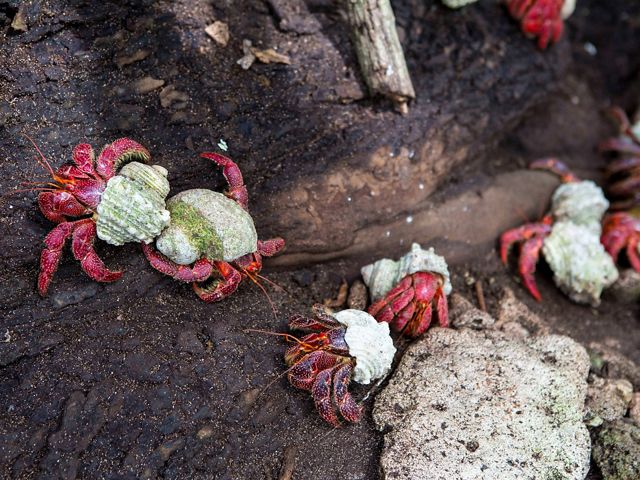
Palmyra’s wildness is due, in part, to its remoteness. The atoll lies at the northern end of the Line Islands, an archipelago that stretches some 1,500 miles south across the equator. Auckland, Los Angeles and Tokyo are each more than 2,500 miles away. The only air service is aboard a Nature Conservancy-chartered Gulfstream jet, which is often crammed with so much scientific gear that even the lavatory is packed full. The wreck of a Lodestar propeller plane, which botched a landing in 1980, still sits forlorn on the edge of Palmyra’s World War II-era crushed-coral landing strip.
But Palmyra’s remoteness has made it a special place. Born from the depths in volcanic fire some 65 million years ago, the island—which sits astride the Intertropical Convergence Zone, where the trade winds meet—was slowly beaten back into the sea by storms. Eventually, however, Palmyra was colonized by corals, which grow up toward the sunlight even as the remnants of the blown-out volcano sink into the ocean’s depths. The atoll is, in effect, a living island whose corals continue to grow to reach the surface of the sea.
Despite being blessed with plenty of white sandy beach, Palmyra is a tempestuous place even today. A rare “wet” atoll, the island is frequently raked with squalls that make the sea and the sky seem to melt together: 15 feet of rain falls here every year.
“I’ve been down here for two months of screaming 20-knot winds and rain every day, just hating life,” says Pollock.
Notwithstanding the sometimes-inhospitable weather, the island is a major mid-Pacific nesting ground—the only haven in nearly a half million square miles of open ocean for red-footed and masked boobies, red- and white-tailed tropic birds, sooty and white terns, and great frigate birds. It is also home to legions of large, cranky-looking coconut crabs, the world’s largest terrestrial arthropods.
Palmyra may be one of the most remote islands in the world. It’s also one of the best protected. When The Nature Conservancy bought Palmyra in 2000 for $30 million from the Fullard-Leo family of Hawaii, which had owned the island since 1922, it was the largest land deal the Conservancy had ever cut up to that time.
“I think people thought we were crazy,” says Suzanne Case, the Conservancy’s Hawaii executive director. “It’s so remote; it’s this little dot of land in the middle of the Pacific Ocean—how do you even get there?”
Recognizing Palmyra’s relative pristineness, the Conservancy quickly moved to transform the atoll into a long-term research station. The organization reopened the abandoned runway, set up a camp with a scientific laboratory, built a small fleet of research vessels and installed a six-person crew to support visiting researchers. The Conservancy also subsequently transferred much of the atoll, and the 16,000 acres of reef that surrounds it, to the U.S. Fish and Wildlife Service, which now manages Palmyra and its surrounding waters as a national wildlife refuge and part of the Pacific Remote Islands Marine National Monument. Today, the Conservancy owns and operates two of the atoll’s islands as preserves, maintains the Palmyra research facilities and supports the scientists while they are on the islands.
“It’s just spectacular. It gives us a whole different perspective on what healthy ecosystems should be,” says Susan White, the superintendent of the Fish and Wildlife Service’s Pacific Reefs National Wildlife Refuge and Monument Complex. “Everything [the scientists] are learning is something that we didn’t know before.”
Researchers may get the chance to see other relatively undisturbed reefs only once in their lifetimes, but the research station at Palmyra affords scientists the ability to return again and again and ask questions that may take years to answer.
“We actually get to do focused, experimental, long-term research here,” says Caselle. “And we can’t do that kind of science anywhere else in the world.”
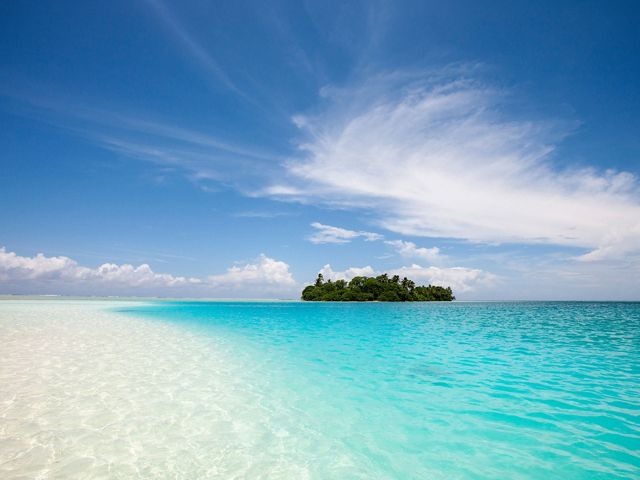
Sharks are a particularly challenging research subject, largely because—as Papastamatiou puts it—“I can’t bring a shark back to the lab.”
Shark science has consequently always demanded a hefty dose of improvisation. Even today, researchers sometimes track sharks by tethering Ping-Pong balls to them, and they sample the animals’ feeding habits by inserting a PVC pipe in their throats, hanging them upside down and gently shaking out their stomach contents. But the new tools of the trade have become undeniably sophisticated. Today, the web of underwater radio receivers around Palmyra is allowing researchers to discern sharks’ movement patterns.
Because the ocean is such a challenging environment in which to work, marine biology is filled with big, basic questions that remain unanswered. That phenomenon is even more pronounced on Palmyra: Because there are so few pristine reef ecosystems left on the planet, scientists have little foundational knowledge from which to start.
“A lot of us have created our entire understanding of how systems function on highly degraded places,” says Caselle. “That’s why this one is so important to study.”
Now after eight seasons of research at Palmyra, scientists are gaining a new understanding of how life really works in the waters surrounding the island. Gray reef sharks tend to rule the atoll’s outer reefs, whereas smaller blacktip reef sharks are dominant in Palmyra’s lagoons. Blacktips tend to have relatively small home ranges, on specific parts of the atoll, and tend to be strongly faithful to those home areas—but researchers believe they may occasionally range farther afield to forage for fish in otherwise-unpopulated corners of the atoll. And observations have revealed that blacktip shark pups spend most of their time in shallow nurseries around the island to avoid being eaten by larger sharks.
One of the most remarkable discoveries so far is that life in Palmyra’s waters forms an inverted “trophic pyramid”: A large number of predators stand at the top of the food chain—sharks make up to 60 percent of the total fish biomass here—with relatively fewer herbivorous fish at the bottom. Although the base of prey is seemingly too small to support the predators, new evidence suggests that a predator-heavy ecosystem is sustained by a kind of turbocharged production of smaller fish further down the food chain.
“Everything’s turning over much faster at the bottom,” says Friedlander. "That’s how you maintain all this biomass at the top. That’s the engine that allows these systems to exist.”
Researchers have also gained new insight into the energy flows between reef ecosystems and the open ocean beyond. Stanford researcher Doug McCauley and several colleagues have documented how seabirds, which forage more than 100 miles out at sea, bring the fish they catch back to the atoll; the nitrogen from the bird’s excreta then feeds plankton in the lagoons; the plankton, in turn, form the food base for manta rays.
Now, scientists are turning their attention to better understanding competition between shark species—and how the animals shape the entire ecosystem. Caselle, Friedlander and other researchers have begun tagging gray reef sharks with acoustic transmitters. Those instruments mark a shark’s location every time it swims near a receiver or listening station moored on the reef and will help the scientists learn more about the animals’ movements offshore. They are also deploying tags designed to reveal not just where a shark is but what it’s doing. Accelerometers, for example, indicate when a shark suddenly speeds up—usually a sign that it’s hunting prey. Papastamatiou, meanwhile, has repurposed a new family of sensors, originally designed for penguins, to implant in sharks: They can detect the acidity of a shark’s gut, providing an even more reliable indicator of when it’s feeding.
Researchers who work at Palmyra are also beginning to compare predator-prey dynamics there with those in more altered reef ecosystems that are home to fewer predators, such as Hawaii. In a system where predators do compete for food, that fact alone completely changes the ecology of the system, according to Stuart Sandin, a researcher at the Scripps Institute of Oceanography in San Diego. “Any fish that’s sick, stupid or wounded is going to get eaten.”
In effect, intense competition between predators kicks natural selection into a higher gear than on predator-poor reefs—forcing prey to run what Sandin calls a “Darwinian gauntlet.” At Palmyra, he says, “these predators [are performing] at their maximum, doing a 100-percent-efficient job taking out everybody who’s vulnerable”—and they may ultimately be making the entire ecosystem much more robust.
How exactly that plays out across the entire reef is a question whose answer lies years in the future. But the research at Palmyra could be important for designing marine protected areas elsewhere in the world and establishing a benchmark from which to understand what critical functions have been lost in more degraded reefs— and, ultimately, how to restore them.
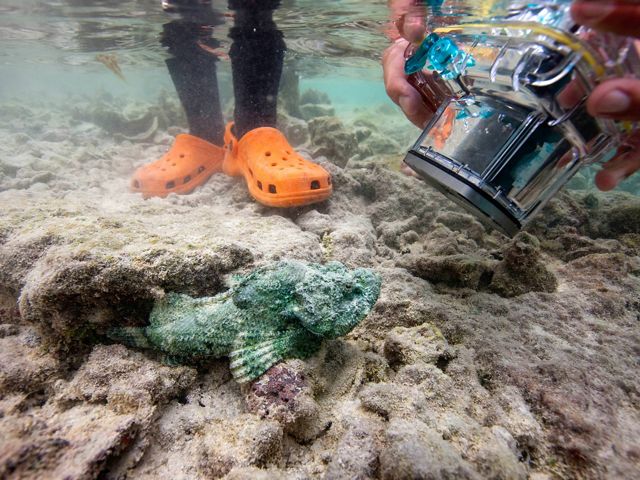
In a quiet corner of a shallow lagoon overhung by native pisonia trees, Pollock and the researchers slosh through ankle-deep water. A fleet of baby blacktip reef sharks moves like a shadow beneath the rising tide. Friedlander stops in his tracks.
“Wow,” he says. “That’s a lot of blacktips.”
Caselle counts 57. Out in deeper water, the fin of a large blacktip suddenly breaks the surface. The water detonates as several blacktip pups dart into shallower water.
“You cannot be off your game for a minute in Palmyra,” she says, “or you’re going to get eaten.”
Pollock swiftly launches a cast net over the gaggle of baby sharks. The water froths furiously as two try to escape from the net. Quickly, Pollock scoops one of the sharks from the net and hands it off to Caselle, who has fashioned a flotation vest into a makeshift worktable. She takes a quick set of measurements. But when she moves to return the shark to the water, it sets its teeth into the life jacket. Caselle finally manages to gently pry the shark free. When she sets it back in the water, it zigzags off like a lightning bolt.
Pollock, meanwhile, looks on from Caselle’s side. “Dad always said, ‘One day, you’ll get over this whole shark thing,’ but I never have,” he says. “It’s afternoons like this when there’s nowhere else I’d rather be in the world.”
About the Writer
Matt Jenkins is a writer and former Nature Conservancy magazine editor who has written for The New York Times, Smithsonian and other publications.